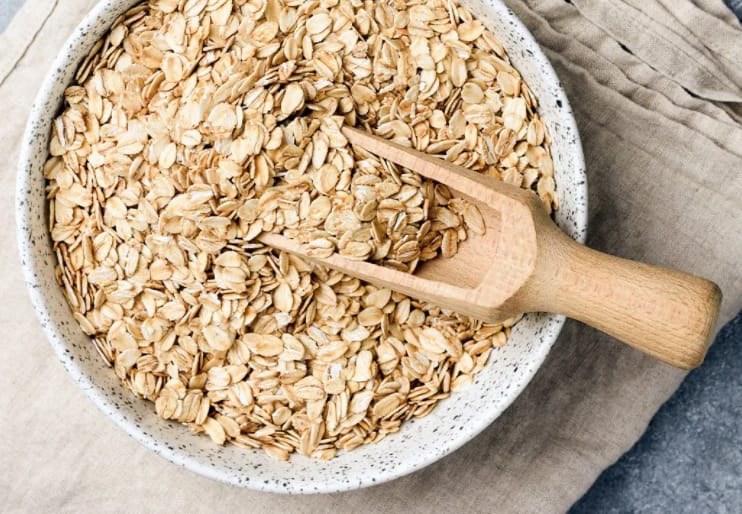 Hi Everyone!!
Hi Everyone!!
NOTES:
* Sooooo, thank you Robert DeVault who contacted me about my blueberries. It prompted a search on how to increase the yield of my plants. The low production might be because I need to lower the Ph in my soil. My problem has always been knowing what the Ph is in the first place!!! Then I found this: How to Use Vinegar and Baking Soda to Increase and Decrease PH in Soil.
 You don’t need a testing kit. You just need vinegar and baking soda. The short version is to mix two small samples of soil with distilled water. Add 1 TB of vinegar to one and 1 TB of baking soda to the other.
You don’t need a testing kit. You just need vinegar and baking soda. The short version is to mix two small samples of soil with distilled water. Add 1 TB of vinegar to one and 1 TB of baking soda to the other.
If the vinegar starts to fizz and bubble, the soil is alkaline. Plants that love alkaline include: asparagus, beets, cauliflower, kale, sweet peas, garlic, pumpkins, spinach
If the baking soda sample starts to fizz, the soil is acidic. Plants that love acidic include blueberries, azaleas, hydrangeas, daffodils, marigolds, gardenias, sweet potatoes, parsley, peppers, potatoes, beans, broccoli, carrots, cabbage, cucumbers, squash, grapes, raspberries
You can add vinegar to the soil to make it more acidic. 1 c. vinegar to 1-gallon water. OR you can add baking soda to the soil to make it more alkaline. 1 TB baking soda to 1-gallon water.
Although Robert insists I should get a real testing kit that gives me more precise Ph numbers, I’m probably just not going to do that. My initial easy soil test says my soil is slightly acidic. So, as soon as the rain subsides, I’ll add some vinegar and call it good for a while.

* Making your own vanilla. Have you seen the price of real vanilla lately? My entire life I always used “imitation” vanilla. UNTIL I tried the real thing. Now I can’t go back. My last bottle I bought at Costco was about $25!! (Of course, it should last a year at least) But, Yikes! So, I started researching how to make my own. I cleaned out my cupboard and found two great bottles (I think one was Worcestershire sauce and the other was rice vinegar) Anyway, I’ve cleaned the bottles and I’m just waiting for my vanilla beans to arrive. Homemade Vanilla Extract – How to Make Vanilla Extract From Scratch.
* Ham Radio Test. I found this online. You can use this app to study for the test. HamStudy.org on the App Store. The app is $3.99. I did NOT use it and claim no knowledge of its efficacy. THIS is the one I used. HamTestOnline™ I had to pay $39 for a year’s subscription, but it taught me so well, that I passed the test easily. There is also a Radio Club that created YouTube videos. I should go back and review them myself. West Desert Amateur Radio Club – YouTube
LONG TERM FOCUS: Oats

Somebody asked me about steel cut oats. So here is the skinny, taken from Food Storage Powerhouse, by Claudia Orgill.
There are four kinds of oats:
1. Whole oats, sometimes referred to as oat groats. These are oats in their whole form. They can be sprouted, tossed into soups, cooked, and eaten as a warm cereal. They can also be ground and used in gluten-free breads.
2. Steel-cut oats. These are whole oats that have been cut down into smaller pieces. They can be tossed into soups or ground into flour. They are also good for hot cereal. My daughter thinks they are a game-changer. Me? Not so much.
3. Rolled oats – old fashioned – These are pressed and flattened whole oats. They cook more quickly than whole oats or steel-cut oats. Old Fashioned oats are more nutritious than quick oats or instant oats. They also have a longer shelf life.
4. Ground Oats. These are oats that have been ground down to a powder. Not recommended for long term storage. But the oats you do store can be ground and made into powder.
Storage: Oats in airtight containers with oxygen absorbers or diatomaceous earth will be good for 30 years or more. You can use 2-liter bottles, Mylar bags, or buckets.
And how much? The back of the oatmeal container says ½ c. dry oats = 1 serving. That’s true, but it’s not much if it is your whole breakfast. Better plan for ¾ c. dry oats instead.
So let’s do some math. There are 2 of us. That’s 1 ½ c. for each breakfast. If we have oatmeal twice a week, for 6 months, that’s 52 oatmeal breakfasts times 1 ½. 78 cups of oatmeal. One container has 15 cups. 78 / 15 = 5.2 So, 5 48-oz containers will last not quite 6 months.
In actuality, we don’t eat oatmeal twice a week. But I try to have 5-6 containers on hand.
SHORT TERM FOCUS: What else can you store for breakfast?
This month we’ve talked about hot cereal, cold cereal, and syrup. What else would you need?
If you are going to store “add water only” pancake mixes, you won’t need much else. But remember, those are only good for about a year, then the leavenings go bad. So you might want to store baking powder. BUT….. it will also go bad after a year or so, so buy 2 of them about 6 months apart, and rotate!!!
And what about eggs? I prefer to buy dehydrated whole eggs instead of freeze-dried scrambled eggs. Emergency Essentials® Whole Egg Powder Large Can. I was worried about how they would taste. So I made some scrambled eggs. My husband didn’t notice any difference. In fact, if you have ever had complimentary breakfast at a hotel, or in any place where they serve cafeteria style, you are probably eating powdered eggs. The link above says the eggs are about $29. IF you watch and search a little, you can probably find them for about $21. Then – buy up. And, you can dehydrate your own eggs. So next time eggs are really cheap, usually around Easter, you might want to get several dozen and try this. Dehydrate all those eggs! – YouTube. He shows you how to dehydrate overnight, and then reconstitute.
72 HOUR KITS
Make your kit fit your needs. Does EVERY person need a backpack? Where do you keep them anyway? How often do you have to update them? I can’t answer that for you. I can only tell you what “I” do. We have two packs, one for each of us, and we keep them in the cars we drive the most. If we are ever together in the car and need those packs, we are going to have to fight over who gets the sleeping pad and who gets the 98 cent rain cover. LOL Other than that, each kit (car) has a first aid kit, flashlight, small stove and matches, food, etc. Each pack weighs about 15 lbs. Every spring (usually the first part of April) I take out the food and decide what to keep and what to rotate. Some of the food in the packs we don’t normally eat i.e. instant oatmeal or Chef Boy R Dee mini-meals. But they work in the packs because they are lightweight and easy to prepare.
You probably have food on your shelves that you can throw in the pack right now: granola bars, Top-Ramen, fruit snacks. In a later post I will show you exactly what “I” have, but you might want to think about what will work for you.
If you have small children, consider 3-4 “tubs” you can stack in your garage. One could be “cooking” things, one could be first aid and sanitary things, one could be extra clothes and blankets. If you had to leave in a hurry, you could just load the tubs in the car and be off.
MISC: Water
Are you wondering how to store water in 55-gallon drums? Or in 5-gallon bottles? Here are some good sites that will give you that information.
Videos:
8 Best Water Storage Options for Emergencies – Kris here at CityPrepping shows a couple of options.
How to store backup water in your garage in 55-gallon barrels – Kris, again, explaining the 55-gallon barrel option.
Webpages:
How to Store Water for Drinking or Cooking
How to Store Water Long Term: 12 Steps (with Pictures) – wikiHow
5 Myths about Water Storage – Be Prepared – Emergency Essentials
FOOD STORAGE RECIPE: More oatmeal recipes
Delicious Oatmeal Pancakes
from Basic Food Storage Cookbook, from the South Jordan Utah River Stake, 2003
1/2 c. whole wheat flour
1/4 tsp salt
1/3 c. powdered milk
2 TB sugar
2 tsp baking powder
Stir until blended.
In a small bowl, beat 2 egg whites until stiff. Set aside.
Combine 2 eggs yolks, 1 c. water, 3 TB oil, and 1 c. oats. Mix with dry ingredients, then fold in egg whites.
Testing Comment: “The recipe was a little complicated when preparing, but my family enjoyed the taste just as much or perhaps more than traditional pancakes. They were much more filling than a traditional pancake.
Oatmeal Cake
from Basic Food Storage Cookbook, from the South Jordan Utah River Stake, 2003
Mix the following and let sit for 20 minutes
1 1/2 c. boiling water
1 c. oatmeal
Cream together:
1 c. sugar
1 c. brown sugar
1 stick softened butter
2 eggs
Add oatmeal mix to creamed mixture and beat until blended. Then add:
1 1/2 c. flour
1 tsp baking soda
1 tsp salt
1 tsp cinnamon
Pour into greased 9 X 13 pan. Sprinkle with topping:
3 TB butter softened
2/3 c. brown sugar
1/2 c. chocolate chips
1/2 c. nuts, chopped (pecans or walnuts)
Bake 375 degrees for 25-30 minutes
Barbecued Beef Patties or Meatballs
from Basic Food Storage Cookbook, from the South Jordan Utah River Stake, 2003
Mix 1 lb. ground beef
1/2 c. rolled oats
1 TB dry onions (note – I like mine reconstituted)
1 egg
salt
pepper
Shape into patties or meatballs and brown in skillet. As they cook, mix together
1 TB Worcestershire sauce
2 TB vinegar
1/2 tsp sugar
2/3 c. catsup
1/3 c. water
2 TB dry onions (again – soak in hot water for about 10-15 min)
Pour the sauce over the meat. Turn patties or meatballs in sauce now and then. Cook for about 15 minutes. Serve over rice, or potatoes, or pasta.
Buy something for your preparedness this week,
Marti Shelley


is Basic Food Storage Cookbook, from the South Jordan Utah River Stake, 2003 available? Thanks for sharing the recipes.